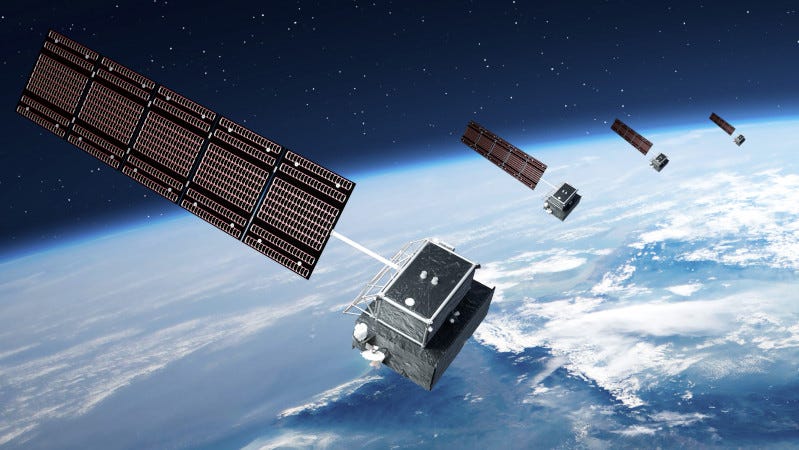Satellite-Based Earth Observation Gaining Market Traction
Annual Growth Exceeding 6 Percent Forecast in New Report
The global satellite-based earth observation market is forecast to hit $6.4 billion by 2032, at a CAGR of 6.6%, according to a new report from Allied Market Research. The industry is expected to gain high traction in the coming years owing to increase in demand for high-resolution earth observation data, rise in applications of earth observation data in diverse sectors such as agriculture, urban planning, and disaster management, and partnerships facilitating miniaturization of satellite sensors.
As governments, organizations, and industries worldwide seek more comprehensive data and insights to understand and mitigate the impacts of climate change, there is a growing demand for earth observation capabilities tailored to monitoring greenhouse gases and environmental changes.
Satellite imagery comprises visual depictions of earth's surface captured by sensors on satellites. These images offer detailed views of land cover, vegetation, urban & natural landscapes, and water bodies. Earth observation data encompasses geospatial details such as geographic coordinates, elevation data, and terrain characteristics. This information serves vital roles in mapping, navigation, and applications within geographic information systems (GIS). The demand for accurate weather forecasting is rising to address the increased frequency and severity of extreme weather events which drives the growth of the satellite-based earth observation industry. The satellite-based earth observation market growth is driven by advancements in technology and increasing demand across various sectors.
The market share for satellite-based earth observation indicates the distribution of market presence among industry players. The key players in the industry such as Airbus and Maxar Technologies have focused on providing observation as a service, predictive analytics, change detection, advanced data analytics, and other services. The forecast also highlights the increasing importance of satellite data in addressing global challenges such as climate change, natural resource management, and disaster response. Observation as a service includes provision of satellite imagery and data on-demand or through a subscription model, allowing users to access specific areas of interest or acquire data at scheduled intervals. Geospatial analytics involves the analysis of satellite imagery and other geospatial data to derive insights, patterns, and trends related to specific geographic locations. This can include tasks such as land cover classification, urban growth monitoring, and spatial analysis of environmental factors.
This market opportunity presents a favorable landscape for businesses to capitalize on the growing demand for satellite data solutions across diverse industries. North America, especially the U.S., hosts some of the premier space agencies, satellite manufacturers, and earth observation service providers, which notably contributes toward the growth of the market. In addition, the continual progress in satellite technology, sensor capabilities, and data processing methods fosters market expansion. Moreover, space agencies in the country are collaborating with commercial satellite providers to enhance their earth observation capabilities. October 2023, NASA significantly expanded its Commercial Smallsat Data Acquisition Program by awarding contracts to seven companies for the provision of earth observation data and services.
Key players operating in the global satellite-based earth observation market include Airbus SE, Boeing, Israel Aerospace Industries Ltd., Lockheed Martin Corporation, Mitsubishi Electric Corporation, Planet Labs PBC, L3Harris Technologies, Inc., SkyWatch Space Applications Inc., Raytheon Technologies Corporation, Thales Group, Maxar Technologies, BlackSky, Capella Space, and ICEYE.





